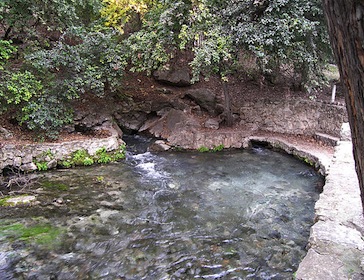By Kate Galbraith
The Texas Tribune
Groundwater levels in Texas’ major aquifers dropped considerably between 2010 and 2011, as the state’s drought intensified, according to a report published recently by the Texas Water Development Board.
The report showed significant declines in the Ogallala Aquifer, which underlies much of the Panhandle. The water board monitors 26 wells in the Ogallala, and water levels dropped in all but one during the 2010-11 period. The average drop was 3.5 feet, with a median decline of 1.8 feet.
“This year of a drought — it has affected even the groundwater levels to a greater extent than I’ve ever seen,” said Janie Hopkins, who manages the water board’s groundwater division.
The figures for 2011-12, which will probably be ready for publication around August, are also expected to be gloomy. There will probably be a “continuing downward [trend] in the majority of these wells, but just at a less rapid rate,” Hopkins said.
The situation is clearly serious in Texas, where 99 percent of the state is abnormally dry or worse, with 10 percent experiencing exceptional drought. Gov. Rick Perry and other top policymakers have pushed the Legislature to allocate $2 billion to a special fund for water-supply projects, but those efforts are in limbo after a key bill in the Texas House was shelved earlier this month. [TCN editor’s note: After this article’s initial publication by The Texas Tribune, lawmakers revived the water-funding measure.]
According to the report, the greatest decline during 2010-11 occurred in the Trinity Aquifer of Central Texas, where 33 monitor wells showed a median drop of 16.7 feet, and an average drop of 19.7 feet. (The water board also includes one well in the Edwards-Trinity Plateau in that calculation.)
In South Texas’ Carrizo-Wilcox Aquifer, median water levels of the monitor wells dropped by 4.4 feet in 2010-11, with average declines of 17.1 feet.
In discussing the Carrizo-Wilcox, the water board noted: “Irrigation pumpage during the drought has increased substantially in the Wintergarden area of [south-central] Texas, particularly Zavala, Wilson, and Atascosa counties. Pumping of groundwater has also increased to support oil and gas exploration and production activities related to the Eagle Ford Shale.”
A Carrizo Aquifer well in nearby LaSalle County showed the greatest change for a single well since 2003, dropping some 136 feet.
Some aquifers rebound with good rain, Hopkins noted.
To understand what the drops really mean, it helps to look at an individual well’s overall depth and rate of change. In the Ogallala, for example, a well in Hansford County contained water at around 70-f00t depths in 1950. Now pumpers hit water at 150 feet, and the well’s overall depth is 185 feet.
Some Ogallala wells show similar declines; others are holding relatively steady, reflecting that geologic and topographic conditions can differ considerably by well.
“You can have lots of variability within a short distance,” Hopkins said. She cited the “heterogeneity of the rocks, even with one formation.”
One Ogallala well used in the water board’s research went dry about 18 months ago, she said.
To check the real-time levels of the water board’s monitor wells, click here. Hopkins said that the agency, which has experienced budget-tightening like the rest of the state, has had no funding for equipment such as well recorders or transmitters for the past few years, though local groundwater conservation districts often provide such funds. More funding would also potentially allow the water board to publish groundwater reports in a more timely fashion, she said.
+++++
This article originally appeared in The Texas Tribune at http://www.texastribune.org/2013/05/07/texas-groundwater-dropped-sharply-amid-droughtstud/. Based in Austin, the Tribune is a non-partisan, non-profit media organization that promotes civic engagement and discourse on public policy, politics, government and other matters of statewide concern.

